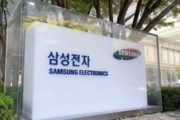
[News Space=Reporter seungwon lee] The fire that occurred on September 26 at the National Information Resources Service (NIRS) in Daejeon was confirmed by a joint investigation by the police, fire authorities, and the Ministry of the Interior and Safety to have originated from a lithium-ion battery used in the uninterruptible power supply (UPS).
The battery responsible for the fire was supplied to NIRS in August 2013 and manufactured by LG Energy Solution.
At the time, the UPS battery cells produced by LG Energy Solution between 2012 and 2013 were equipped with a battery management system (BMS) by LG CNS, an affiliate company, and sold to the UPS manufacturer before being delivered to NIRS. The UPS battery was installed in August 2014 and had been in use for over 10 years, exceeding its expected service life by about one year.
The fire occurred during the process of moving the batteries. Thirteen workers were relocating batteries from the 5th-floor computer room to the basement when sparks ignited from one battery. The fire reportedly started due to a short circuit when cables were disconnected before power was fully cut off.
This relocation work was conducted by a small telecommunications equipment company in the Daejeon area, and concerns were raised about the lack of expertise among the workers, including part-time employees.
LG Energy Solution stated that due to the nature of UPS batteries having fewer charge-discharge cycles and no abnormalities found during a safety inspection in June, the aging battery is not considered an immediate cause of the fire.
However, because UPS batteries use direct current, incomplete power shutdown or residual currents increase fire risks, and insufficient safety measures by the workers are suspected as the decisive cause.
The fire highlighted issues related to the characteristics of lithium-ion batteries as well as problems in the working environment and overall safety management systems. The fire agency, police, and National Forensic Service are jointly investigating the cause, with detailed findings and responsibility expected soon.
This incident is similar to the 2022 SK C&C data center fire, where lithium-ion batteries used for UPS were also the primary cause, emphasizing the need for stricter safety management of government and public institution data networks.
In the 2022 incident, the batteries were manufactured by SK On, and the fire started near the UPS battery racks on the third basement floor. CCTV footage captured sparks from SK On lithium-ion batteries. These batteries were connected to UPS systems for backup power supply, and the fire caused a massive outage of major online services such as KakaoTalk.
Investigations considered not only battery defects but also potential issues with the battery management system (BMS), noting that initial firefighting failures contributed to the damage spread. SK On batteries were high-energy density nickel-cobalt-manganese (NCM) lithium-ion batteries and were considered relatively new models at the time.
Experts raised concerns that electrical factors within the UPS and poor battery management likely combined to increase fire risk. They stressed the importance of strengthening worker expertise and revising regulations for periodic management and replacement of fire-prone lithium batteries.











































